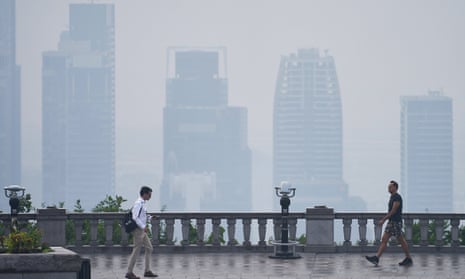
BEIJING/OTTAWA, July 28 (NNN-XINHUA) — The massive carbon dioxide emissions from the raging wildfires in Canada have exceeded one billion tonnes, according to a study by Chinese scientists.
Greenhouse gases such as carbon dioxide, methane and nitrous oxide emitted by the wildfires in Canada have a noticeable impact on global warming and the wildfires have evolved into a global environmental event, said Liu Zhihua, a researcher from the Institute of Applied Ecology, Chinese Academy of Sciences who led the study.
According to the Canadian Interagency Forest Fire Center (CIFFC), as of July 26 local time, there were 4,774 fires across the country, and the cumulative fire area has exceeded 121,000 square kilometers.
The researchers conducted a rapid assessment of greenhouse gas emissions from the wildfires based on remote sensing observations.
It is estimated that as of July 26 local time, the wildfires in Canada have directly emitted about one billion tonnes of carbon dioxide. The greenhouse effect of methane and nitrous oxide emissions is about 110 million tonnes of carbon dioxide equivalent, and the total greenhouse gas emissions are about 1.11 billion tonnes of carbon dioxide equivalent.
This number has exceeded Japan’s energy-related carbon dioxide emissions of 1.067 billion tonnes in 2021, according to data cited from the Global Carbon Project.
In addition to affecting the climate, the wildfires in Canada also released air pollutants such as PM2.5, PM10, organic aerosols, and black carbon, which harm human health.
In June, the air quality in New York, Chicago, and other places in the United States deteriorated significantly. These air pollutants are also transported over long distances worldwide under westerly circulation, affecting areas in Europe, North Africa, and Asia.
The wildfires have also wreaked havoc on forest ecosystems. The rapidly burning wildfires led to extensive vegetation destruction and biodiversity loss, depriving animals of habitats and food sources. — NNN-XINHUA





